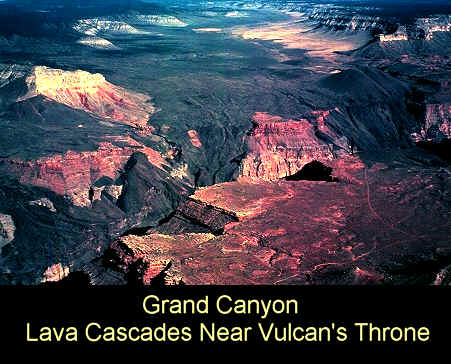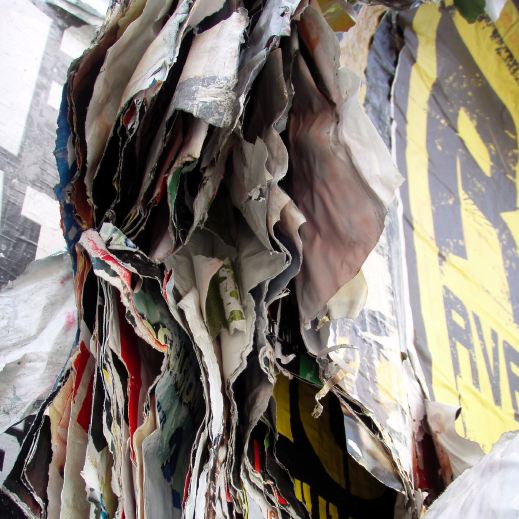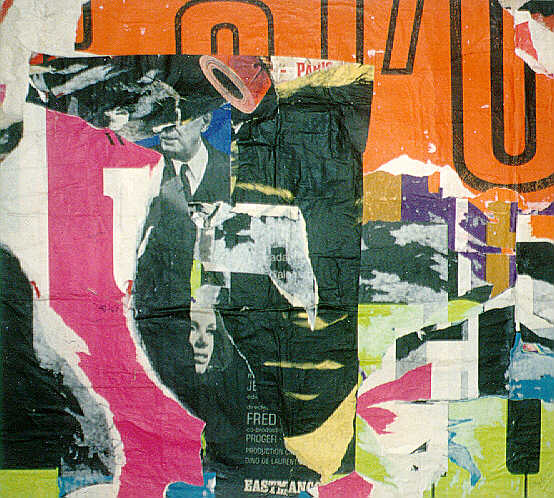
Below is a theoretical statement which, from Deleuze's perspective, would be almost exactly analogous to Freud's reductive reading of the Wolf-man. Though unlike Freud, it is willing to acknowledge, at least momentarily, the apparent multiplicity of nature; having made this admission, it nevertheless procedes immediately to move beyond this in the interest of indentifying a unified structure.
Every landscape appears first of all as a vast chaos, which leaves one free to choose the meaning one wants to give it. But, over and above agricultural considerations, geographic irregularities and the various accidents of history and prehistory, the most magestic meaning of all is surely that which precedes, commands and, to a large extent, explains the others. A pale blurred line, or an often almost imperceptible difference  in the shape and consistency of rock fragments, are evidence of the fact that two oceans once succeeded each other where, today, I can see nothing but barren soil. As I follow the traces of age-old stagnation despite all obstacles - sheer cliff faces, landslides, scrub and cultivated land - and disregarding paths and fences, I seem to be proceeding in meaningless fashion. But the sole aim of this contrariness is to recapture the master-meaning, which may be obscure but of which each of the others is a partial or distorted transposition. . . .
in the shape and consistency of rock fragments, are evidence of the fact that two oceans once succeeded each other where, today, I can see nothing but barren soil. As I follow the traces of age-old stagnation despite all obstacles - sheer cliff faces, landslides, scrub and cultivated land - and disregarding paths and fences, I seem to be proceeding in meaningless fashion. But the sole aim of this contrariness is to recapture the master-meaning, which may be obscure but of which each of the others is a partial or distorted transposition. . . .
When I became acquainted with Freud's theories, I quite naturally looked upon them as the applications, to the individual human being, of a method the basic pattern of which is represented by geology. In both caes, the researcher, to begin with, finds himself faces with seemingly impenetrable phenomena; in both cases, in order to take stock of and gauge, the elements of a complex situation, he most display subtle qualities, such as sensitivity, intuition and taste. And yet, the order which is thrus introduced into a seemingly incoherent mass is neighter contingent nor arbitrary. Unlike the history of the historians, that of the geologist is similar to the history of the psychoanalyst in that it tries to project in time - rather in the manner of a tableau vivant - certain basic characteristics of the physical and mental universe. I can take the simile of the tableau vivant further: the game called 'charades' provides a simple illustration of a procedure which consists in interpreting each action as the unfolding in time of certain eternal truths, the concrete aspect of which in other fields are referred to specifically as laws. In all these instances, the arousing of aesthetic curiosity leads directly to an acquisition of knowledge.
-- Claude Levi-Strauss, Tristes Tropiques
What interests me in the SI cover above, aside from the obvious, is the way the image is composed out of various layers of photograph and text, each of which we created at different moments and brought together after the fact. The effect achieved by this conjunction is a figure which seems tissue thin and to be hovering in empty space amongst other paper cuttings situated at various distances. Notice how the effect of depth does not entail a gradually and continuously receding space but rather number of planes, a quantized space in which they eye must leap suddenly from stratum to stratum. Here space is not a neutral container which happens to house these objects. Rather, the objects are prior to space, and whatever space exists is the pure function of the relations between the various strata formed by the various objects. This is a pure fantasy space, like the Freudian primal scene, a constructed vision which can be made to pop into bold relief and startling apparent presence - and always at the cost of going blind to the composite nature of the construct. How to liberate oneself from this mesmerizing effect? Flatten the image, reducing it to (n -1) dimensions.
The point of course is that nature does not have a face, that the picturesque landscapes which 19th-century Natural Theology saw as indisputable evidence of the creative artistry of God, are not in the least products of any divine intention or inner unifying developmental force, but rather the conflictual result of an vast array of uncoordinated external forces. Deleuze and Guatarri's argument is that not only do we err in imposing organic metaphors onto nature, but additionall and as significantly, we err in imposing organic metaphors onto organisms.








 in the shape and consistency of rock fragments, are evidence of the fact that two oceans once succeeded each other where, today, I can see nothing but barren soil. As I follow the traces of age-old stagnation despite all obstacles - sheer cliff faces, landslides, scrub and cultivated land - and disregarding paths and fences, I seem to be proceeding in meaningless fashion. But the sole aim of this contrariness is to recapture the master-meaning, which may be obscure but of which each of the others is a partial or distorted transposition. . . .
in the shape and consistency of rock fragments, are evidence of the fact that two oceans once succeeded each other where, today, I can see nothing but barren soil. As I follow the traces of age-old stagnation despite all obstacles - sheer cliff faces, landslides, scrub and cultivated land - and disregarding paths and fences, I seem to be proceeding in meaningless fashion. But the sole aim of this contrariness is to recapture the master-meaning, which may be obscure but of which each of the others is a partial or distorted transposition. . . . 